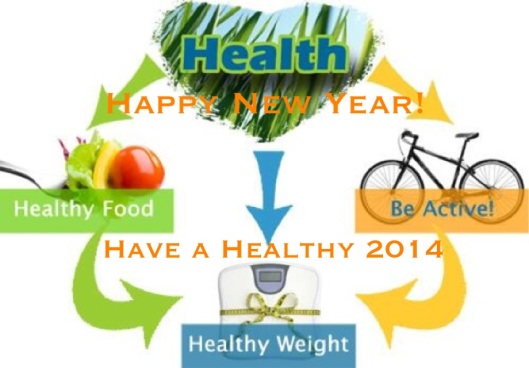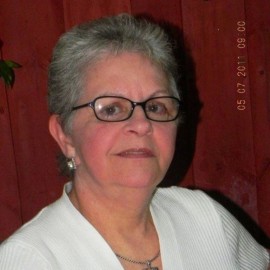If you stay connected to the Internet and are interested in fitness and exercise, you probably are familiar with an article by Dr. Eric Robertson, which blamed CrossFit® for the development of Rhabdomyolysis – a potentially life-threatening condition. Also, if you kept up with the story, you may have also seen a great piece by Erika Andersen, which promoted personal responsibility for anyone participating in any type of exercise program – especially CrossFit®.
Although I usually try not to engage in this type of controversy, as most pieces are primarily based on personal opinions and everyone is entitled to their own, there are some misconceptions that were alleged on the first article I would like to address. As some of you know, over the last year our laboratory has focused on the study of CrossFit® as a training modality. These studies have provided me the opportunity to read, research, meet and talk to a vast number of individuals, both for and against this training modality.
CrossFit® causes Rhabdomyolysis.
Although it is unfortunate that anyone has to experience this condition, regardless of severity, the premise that CrossFit® causes Rhabdomyolysis suggests a “cause and effect” that is simply not true and is based on the experience of ONE individual, which is far from the number required to make this type of association. Then, “is it possible?” Yes, of course, but so is dying from sudden cardiac death during an athletic event, or during an exercise stress test. These risks are inherent in any type of physical activity, regardless of their intensity. Yet, we continue to promote physical activity and exercise to people around the world because the benefits of such activity outweigh the risks for most individuals. This is so much so that the American College of Sports Medicine (ACSM) recently changed their Guidelines for Exercise Testing and Prescription to encourage all individuals to perform light to moderate activity regardless of their risk classification, suggesting that not being physically active has a greater risk than participating in such activity (read more about that here).
Rhabdomyolysis in the scientific literature
If we look in the scientific literature we find several instances of rhabdomyolysis as a result of some type of physical activity (exertional rhabdomyolysis). Inklebarger and colleagues (4) reported the first case of self-induced rhabdomyolysis in a 63-year-old woman who exercised on a stationary bike a day prior to her emergency room visit. In 2011, Boni and Rabiti (1) reported on the first Italian case of exertional rhabdomyolysis after a session of indoor cycling – Spinning®. Three other cases have been reported specifically related to resistance training, all of which occurred in a national fitness center chain (2,7). However, cases of exertional rhabdomyolysis have also been reported in young adults while preforming less “strenuous” activities. A 25-year-old woman required hemodialysis for six-weeks after hiking for hours in the Grand Canyon (3). A 19-year-old college freshman experience exertional rhabdomyolysis after playing in a ultimate Frisbee tournament (5). Therefore, to say that CrossFit® causes exertional rhabdomyolysis is like blaming your favorite running shoe <<ENTER BRAND NAME HERE>> for your shin splints.
Exertional Rhabdomyolysis is caused by a breakdown of muscle fibers due to unaccustomed exercise and it is a life-threatening condition, characterized by muscular pain, muscle weakness, and dark urine. Seeking early treatment is paramount to minimize damage to the kidneys and preventing kidney failure. Moreover, even though overexertion may be the primary factor leading to this condition, secondary factors such as dehydration, genetic conditions (sickle cell trait), metabolic defects in the muscle, bacterial or viral infections, heat stress, nutritional supplementation and drug use exacerbate muscle damage, regardless of the exercising intensity (7). Thus, individuals – and coaches – should be aware of these factors to minimize the risk of this condition.
A fitness industry problem?
This brings us to the topic of the CrossFit® Level 1 certification – don’t shut me out here; please keep reading. A week before Dr. Robertson’s article, Patrick McCarty, a Master level CrossFit® athlete, wrote a great piece on what it means to be a CrossFit® coach; however, this didn’t get as much hype…
The certification process for CrossFit® coaches is no different than any other “basic” certification in the health and fitness industry. Most personal trainers are certified in the same manner. This might suggest an issue with the entire fitness industry, not just CrossFit®. The “good” coaches seek continuing education opportunities that enhance their understanding of their job, just like any other professional (read Patrick’s post above). CrossFit® coaches are no different. As a matter of fact, some CrossFit® coaches have one of the highest distinctions in the industry – the Certified Strength and Conditioning Coach (CSCS) certification.
The Level 1 certification is just that, a basic introduction to the core and basic concepts by which this training modality was designed. As Erika Andersen eloquently presented in her piece, consumers should be responsible to seek out coaches that are sufficiently qualified to keep them safe throughout any session. Just like in other professions, there are good coaches and not so good ones. When was the last time you went to a dentist you didn’t like?
Obviously, CrossFit® is not for everyone. However, with good instruction everyone can participate in this training modality and gain significant improvements (6). From a health promotion stand point; CrossFit® has revolutionized the fitness industry furnishing the opportunity to all individuals (particularly women) to participate in vigorous resistance type of physical activity programs, which they might have never attempted otherwise.
Want to read more? Here are some of the references I used:
-
Boni R, Rabitti PG. [Spinning-induced rhabdomyolysis: importance of MRI for patient’s outcome. A case report]. Reumatismo. 2011; 63 (1): 44-8.
-
Casares P, Marull J. Over a millon Creatine Kinase due to a heavy work-out: A case report. Cases J. 2008; 1 (1): 173.
-
Clarkson PM. Worst Case Scenarios: Exertional Rhabdomyolysis and Acute Renal Failure. Sports Science Exchange. 1993; 4.
-
Inklebarger J, Galanis N, Kirkos J, Kapetanos G. Exercise-induced rhabdomyolysis from stationary biking: a case report. Hippokratia. 2010; 14 (4): 279-80.
-
Krivickas LS. Recurrent rhabdomyolysis in a collegiate athlete: a case report. Medicine and science in sports and exercise. 2006; 38 (3): 407-10.
-
Smith MM, Sommer AJ, Starkoff BE, Devor ST. Crossfit-based high intensity power training improves maximal aerobic fitness and body composition. J Strength Cond Res. 2013.
-
Springer BL, Clarkson PM. Two cases of exertional rhabdomyolysis precipitated by personal trainers. Medicine and science in sports and exercise. 2003; 35 (9): 1499-502.


